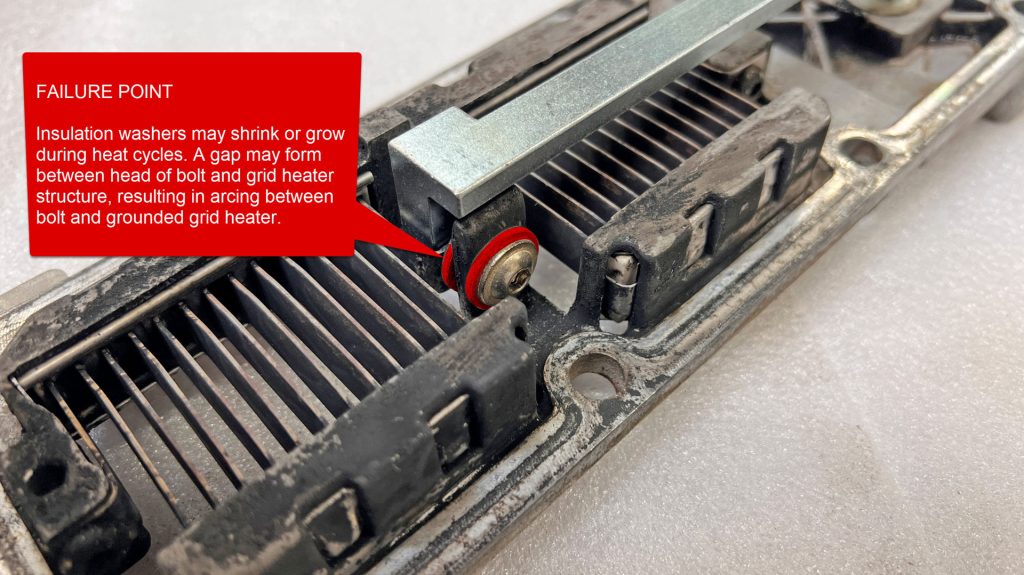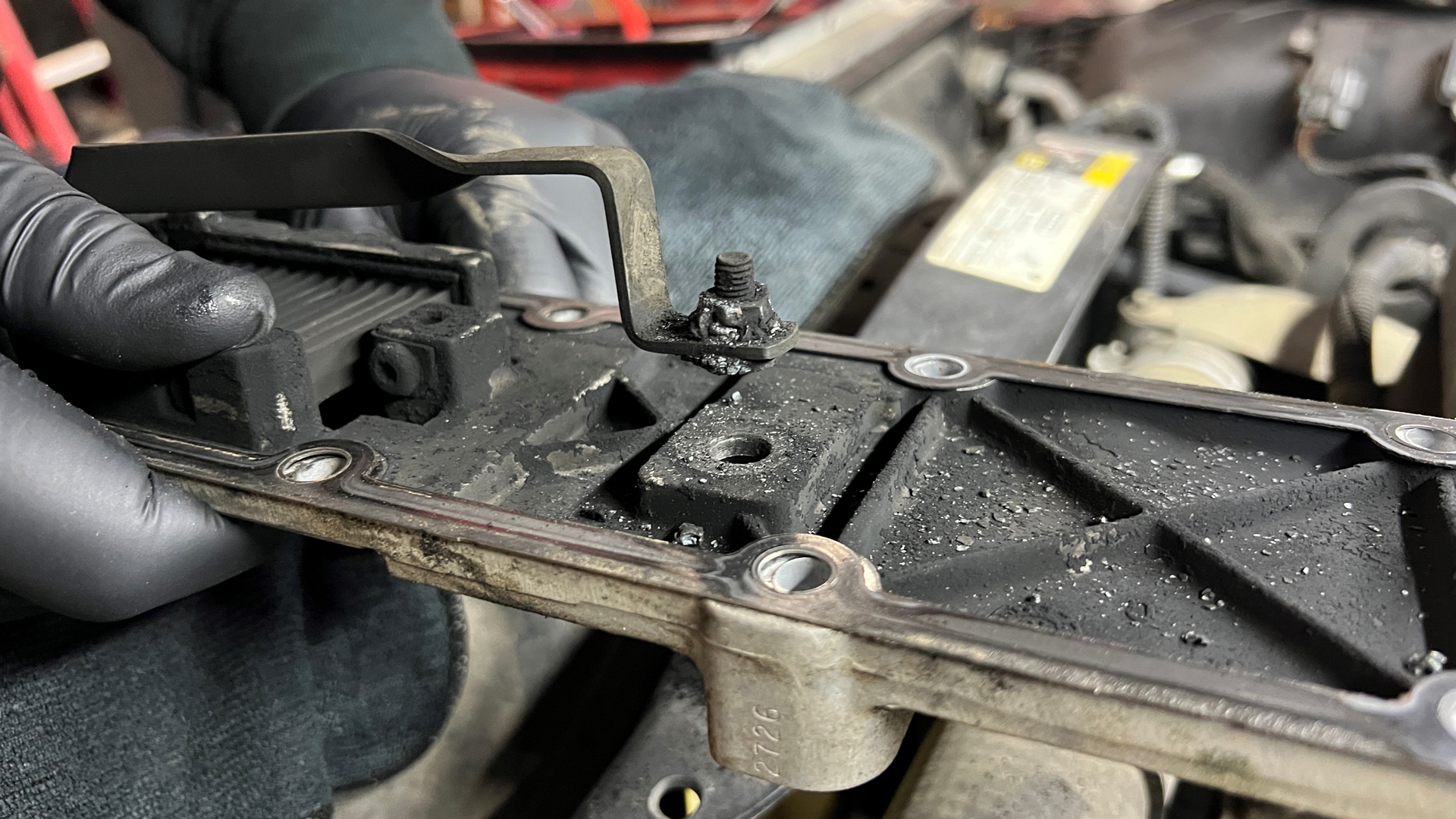Ram’s 6.7-liter Cummins diesel is a powerhouse, but there’s one crucial pain point that has plagued owners for more than a decade, and that’s the grid heater bolt failure. This problem affects Ram 2500, 3500, 4500, and 5500 trucks built between the 2007.5 and 2024 model years. It has been the cause of expensive repairs and even complete engine replacements. That’s bad news, but thankfully, there’s a permanent fix: Deleting the Cummins grid heater altogether with an aftermarket kit like the Banks Power Monster-Ram Intake with the Killer Grid Heater Upgrade.
This modification eliminates the problem by removing the entire assembly, including the pesky bolt that can fall into one of the 6.7-liter’s cylinders. Importantly, this is the only way to ensure the failure doesn’t ruin your engine, as “repair kits” that simply redesign the grid heater still contain hardware that’s prone to failing in high-temp environments. At least one third-party “upgrade” effectively recreates the initial problem, meaning it doesn’t actually repair anything.
In this article, I’ll explain how deleting the Cummins grid heater prevents the bolt failure with a detailed look at the modification itself. I’ll also explain the potential performance benefits of removing the restrictive grid heater. And finally, I’ll go in-depth to support my claim that popular “repair kits” don’t always prevent the grid heater bolt failure.
But first, I’ll clearly define the problem that has caused Ram owners to lose sleep wondering if it will happen to them next.
What Is the Cummins Grid Heater Bolt Failure?
Before switching to glow plugs on 2025 model year Ram trucks, 6.7L Cummins diesel engines used a grid heater to aid cold starts. In short, the component warms intake air with an electrical heating element. Said element is located inside the engine’s intake manifold, where it’s fastened with two threaded fasteners that secure the electrical connection—up to 200 amps.
That bolt has caused problems for many Ram drivers as it weakens with repeated heat cycles and vibration. Given that it pulls so much power from the truck’s 12-volt battery, any gap in the connection can become troublesome. If a gap forms and allows the 200 amps or more to arc, it can superheat the hardware, accelerating wear drastically.
Once it reaches its breaking point, the brittle metal snaps and finds its way into the Cummins engine. This can result in horrific engine knock as well as total power loss. Best case scenario, you’re left replacing a piston and possibly a turbo. Worst case scenario, you’re buying a new 6.7L.
Signs Of Grid Heater Bolt Failure
The 6.7L Cummins grid heater bolt failure almost always presents itself clearly once it occurs. Owners don’t typically have to guess if something is wrong with their truck when the hardware breaks; they know. But there is a way to check if the bolt is loose, and that’s by performing a simple jiggle test:
You can see in the video embedded above that there’s a 12-volt lead connected to the bolt, which is located beside the fuel rail. A 10-millimeter nut sits on top. If the post moves at all when you attempt to jiggle it, that means the bolt on the underside is at least starting to fail. It’s crucial that owners check this, whether or not they’ve noticed any signs of a problem, as it can save you from a costly repair.
Forum threads and testimonials from people who didn’t catch the failure in time report seeing two diagnostic trouble codes: P2609 (“Intake Air Heater System Performance”) and P0542 (“Intake Air Heater Circuit High”). If your 6.7L Cummins-powered pickup is throwing either of those codes, you more than likely have a broken grid heater bolt on your hands. But don’t count on seeing either one before it’s too late.
In other cases, it begins with audible clues, like loud engine knock—beyond what’s normal on a big diesel pickup engine. It may not be extremely noticeable at idle, but as engine RPM climbs, it grows louder. That’s the bolt rattling around inside cylinder number six, nearest to the firewall.
It doesn’t take much metallic debris to scar a cylinder or piston. If you continue driving the truck with the bolt inside the engine, it can lead to power loss and a mega repair bill. Remanufactured 6.7L Cummins engines can cost $12,000 or more, as this online listing shows, and that price doesn’t include a valve cover, rockers and pushrods, or a water pump.
What a Grid Heater Delete Does for Your Truck
Despite being part of the engine’s factory design, a grid heater is not required for normal operation—especially in warmer climates. In fact, deleting the grid heater can actually make your truck run better as a free-flowing intake design like Banks’ Monster-Ram feeds more air into the engine. That being said, not all grid heater deletes are made equal.
Black Market Performance offers an intake elbow that removes the grid heater but actually flows less air than stock. This design causes your engine to lose horsepower. That’s because the intake elbow, which wears Cummins part #4930917, is actually designed for QSB industrial engines normally used in generators. Since those designs are only rated at 130-275 hp, they don’t need to flow as much air as your truck’s engine, which is factory-rated between 370-420 hp.
That’s why you should do your research and choose the best grid heater delete.
Because it’s been around for years, you can find dozens of independent Banks Monster-Ram intake reviews on forums and in Facebook groups. This one on CumminsForum.com explains that after installing the part, his truck’s turbo spooled up significantly quicker. If the Monster-Ram intake were more restrictive, like Black Market Performance’s, that wouldn’t be the case.
Additionally, Banks offers the Monster-Ram with a vertical coil-style High-Flow Heater, so you aren’t left without a cold start aid.
Why a Cummins Grid Heater Delete Is the Only True Fix
Until the grid heater is gone, potential bolt failure still looms. Let’s look at the BD Diesel Killer Grid Heater kit.
BD’s kit has been redesigned three times. The latest iteration eliminates the nut on the inside of the grid heater, so that the bolt threads directly into a part known as the busbar. This would be great, if it didn’t retain the second grid heater nut and bolt that’s prone to failing. The company includes new hardware that it claims is higher quality than the factory bolt, but due to the design, it’s still subject to high heat, vibration, and 200 amps or more of electrical power.
The bolt that supports the busbar on BD’s kit prevents it from grounding out on the body of the grid heater. It does that by way of two insulation washers. However, by designing it this way, BD has effectively replicated Cummins’ initial mistake. Those washers shrink and grow after repeated heat cycles, which can result in a gap between the head of the bolt and the grid heater body. If a gap exists, 200 amps of electricity can jump across it, amplifying temperatures and causing the threaded stud and bolt to deform and eventually fail.

One 6.7L Cummins owner I spoke with installed the BD Diesel Killer Grid Heater kit on his 2016 Ram 2500. “My truck was up on the extended warranty, and I had known about the grid heater bolt that falls into the intake manifold,” he said. “I started looking into the kits, and I ultimately ended up getting the BD grid heater kit.”
Less than a week later, his pickup caught fire. “[The] truck never even had a light on the dash. Not once. [It had] 100,000 miles. Was driving it, random lights starting coming on and off, the radio shut off, pulled over and popped the hood it was fully engulfed.”

The owner said there was “no way to prove anything,” so he cut his losses. It’s also worth noting that I haven’t found any other examples of trucks catching fire after installing the BD Diesel kit.
Regardless, the BD Diesel Killer Grid Heater kit does not give you a permanent fix. Instead, it only buys you time before the flawed system potentially fails just like the factory unit.
Verdict
All of this is to say: If you own a 6.7L Cummins, delete your stinkin’ grid heater. Don’t buy a “repair kit” that redesigns the part so it fails in a slightly different but equally disastrous way. You’ll be able to sleep at night knowing a $1 bolt isn’t standing between you and getting to work in the morning. And also, as you drive, you’ll enjoy better performance with the restrictive component gone and more air making its way into your diesel engine.


Leave a Reply
You must be logged in to post a comment.